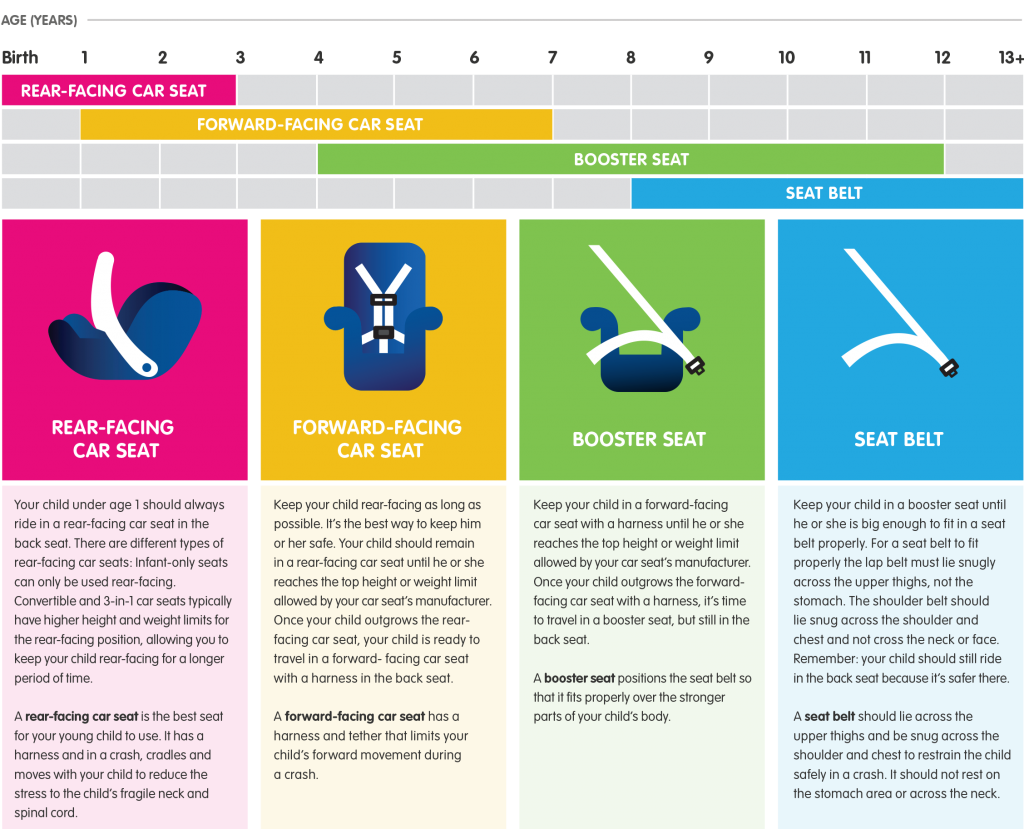|
Rear-Facing
Typically, is used for newborn and young children because it protects the child’s head, neck, and spinal cord and is reclined at an angle that keeps their airway clear. A rear-facing seat means the seat faces in the opposite direction of the driver where the child’s feet are facing towards the back of the vehicle. The harness straps should come out at or below their shoulders. It is always important to check the height and weight requirement of the seat. Best practice suggests leaving the child in a rear-facing seat as long as they still meet the height OR weight requirements. Read more about rear-facing seats.
Forward-Facing
After a child has outgrown a rear-facing seat, the child moves to a forward-facing seat which still contains a five-point harness but also has a tether strap. The tether strap helps reduce forward movement in a vehicle crash and should always be used. The harness straps should come out or above their shoulders. Read more about forward-facing seats.
Convertible Seats
Some caregivers choose to select a convertible seat that can be used rear-facing or forward-facing once the child has met the height or weight requirements of the rear-facing seat. When installing a convertible seat, always check your car seat manual to see the correct position to place the seat belt or lower anchor attachments as that will differ depending on if it is rear-facing or forward-facing. Read more about convertible seats.
Booster Seats
After your child outgrows the weight or height limits of the forward-facing car seat, use a belt-positioning booster seat with the vehicle lap and shoulder belt. There are two types of booster seats, high back and low back. Read more about booster seat safety.
Child passenger safety can be overwhelming but just take it one step at a time and always read your car seat manual as that will provide you with the most updated information on your specific seat. If you have additional questions after reading through your manual and installing your seat, contact a fitting station near you! Find locations of fitting stations near you.
|
